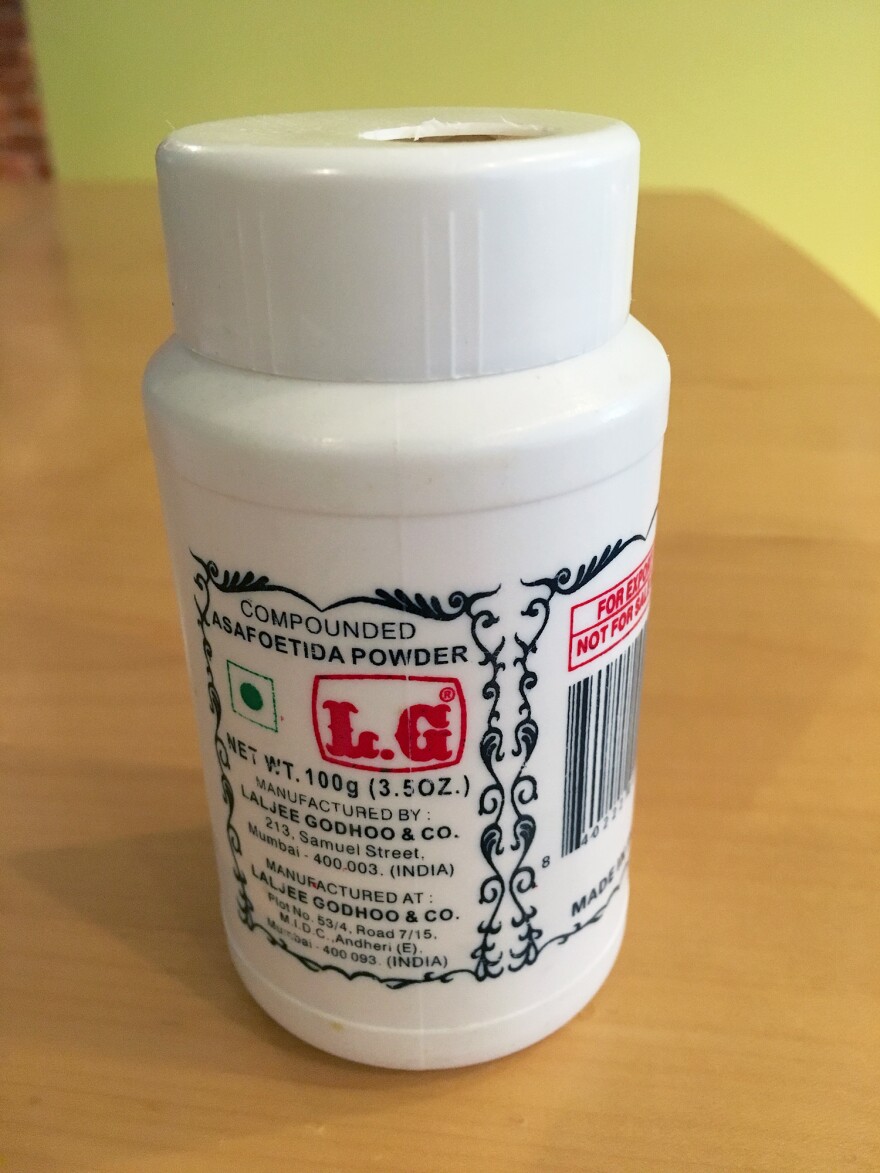The moment my boyfriend — now husband — and I got serious about our future together, my father-in-law got serious about teaching me to cook Indian cuisine. My boyfriend was already skilled in the kitchen. But Dr. Jashwant Sharma wanted extra assurance that the dishes from his native country would always have a place in our home. Plus, as he told me recently, he thought I'd like it.
"We mix four, five, six different spices in a single dish. These create a taste and aroma that you don't get in any other food. People exposed to it usually like it," he said.
Even before our cooking sessions, I knew that cumin and coriander are common ingredients and that turmeric will turn your fingers yellow. Hing, however, was something entirely new to me.
Europeans gave it the decidedly unflattering moniker "devil's dung." Even its more common English name, asafoetida, is derived from the Latin for fetid. Those unaccustomed to it can respond negatively to its strong aroma, a mix of sulfur and onions.
Hing comes from the resin of giant fennel plants that grow wild in Afghanistan and Iran. The resin can be kept pure, but in the States, you mostly find it ground to a powder and mixed with wheat. In The Book of Spice, author John O'Connell describes how Mughals from the Middle East first brought hing to India in the 16th century.
Many Indians use hing to add umami to an array of savory dishes. But for the uninitiated, hing can be a tough sell. Kate O'Donnell, author of , says that she only included hing as an optional spice. "For a Western palette, hing can be shocking," she says.

I first encountered hing in one of our early cooking sessions. My father-in-law whipped its well-sealed white plastic bottle out of the cupboard, added a pinch to the pan, and put it back so quickly that I didn't notice the smell. I was most struck by how it bubbled and then dissolved in the hot ghee (clarified butter). And I was a bit skeptical that a pinch of anything could influence a giant pot of lentils liberally seasoned with three other spices.
Later, while experimenting on my own, I got my first full whiff of the spice. To me, the aromais far from gag-inducing, but it takes a real leap of faith to add it to food. Once you make that leap, magical things happen.
When cooked, hing's pungent odor mellows to a more mild leek- and garlic-like flavor. Some still smell a hint of sulfur, but for many that quality fades entirely. My father-in-law says that hing has a balancing effect on a dish. "It smooths out the aroma of all the other spices and makes them all very pleasant," he says.
Vikram Sunderam, a James Beard Award winner and chef at the Washington, D.C., Indian restaurants Rasika West End and Rasika Penn Quarter, says that he adds hing to lentil or broccoli dishes. But he uses it judiciously.
"Hing is a very interesting spice, but it has to be used in the right quantity," he cautions. "Even a little bit too much overpowers the whole dish, makes it just taste bitter."
Some believe that hing helps with digestion and can ward off flatulence. Perhaps that's why many — including Sunderam — add it to legumes, broccoli and other potentially gas-inducing vegetables.
Some Indians also use it as a substitute for garlic and onions — ingredients discouraged by certain Eastern religions and Ayurvedic medicine.
That substitutionmakes sense to Gary Takeoka, a food chemist with the U.S. Department of Agriculture. Takeoka studied hing's volatiles — the chemical compounds that produce smells. "A major proportion of hing's volatiles are sulfur compounds," he explains. "Some of these are similar to the ones found in onions and garlic."
Hing also has many traditional medicinal uses in India and beyond. In India, it's believed to help with everything from kidney stones to bronchitis. In Afghanistan, it's thought to cure whooping cough and ulcers. In Egypt, it's considered a diuretic.
You can find hing in food outside of Indian cuisine, too. You may have encountered it in Worcestershire sauce. It's also added to some Middle Eastern dishes. But in this age of global food fusion, I'm surprised that hing's reach hasn't expanded.
My own family's culinary identity is Slovak. While I can't speak for all Slovak cuisine, the select dishes that reached through three generations to my kitchen table don't offer much in the way of spice. We season pierogies with salt and pepper, and lima bean soup with vinegar.
I can imagine my great uncle's protest if I were to add chili or cumin to our food. It would change the traditional taste too much. But a tiny dash of hing? That's something we might all be able to get behind. Especially in the bean soup.
Copyright 2021 NPR. To see more, visit https://www.npr.org. 9(MDEwMTk5OTQ0MDEzNDkxMDYyMDQ2MjdiMw004))




